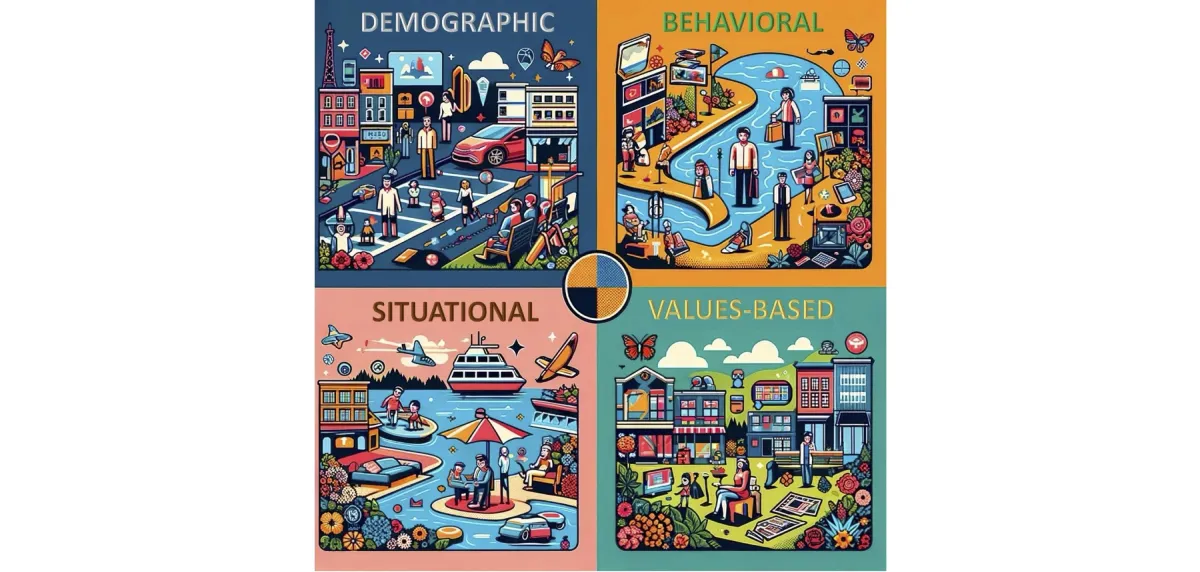The Human View™ Blog

The Top 4 Approaches to Personalization
To optimize the impact of employer-paid - and even voluntary - benefit programs, we have to optimize how we reach out to our employees, how we communicate to them, and how we educate them. All of those factors drive how - or if - employees will enroll in, participate, and engage with our dearly-bought and agonizingly-managed plans.
We've known for some years that one-size-fits-all education and communications approaches are sub-optimal. We've known that a personalized approach is preferable, but the question has persisted, "How do we actually do that?"
In this post, we'll cover 4 distinct approaches to employee segmentation and personalization: (1) demographic, (2) situational, (3) behavioral, and (4) psychographic / values-based. They're presented in a progression from simpler (but less effective) to more sophisticated (and more effective).
Keep in mind that there's a trade-off between having enough differentiation to support meaningful personalization and preserving enough administrative ease for meaningful employer and vendor reporting. A 3-segment model is certainly easier to manage, but it sacrifices the precision that, say, a 10-segment model could provide. But a 10-segment model is radically more complex to administer and report on! Experts note that, for benefits and healthcare, a 5-6 segment model is ideal.

Demographic / generational models
The good news about demographics is that everybody already has that data. We know the ages, genders, ethnicities and incomes of employees. We know that younger people are more likely to be oriented towards starting and raising families, and that older people are more likely to be oriented towards retirement. And we know that older people are also more prone to have chronic health conditions.
Still, within each generational segment there will be significantly different behaviors, and needs, and attitudes towards health. As one of my old colleagues once said that, without personalizing out outreach, "It's like trying to perform surgery with a blunt instrument."
Situational models
Situational models are much less common, but they're more likely to account for the specific circumstances of an employee's life, such as marital status, geographic location, employment types, and cultural impacts. Social Determinants of Health fit into this category - and understanding how socio-economic factors influence health outcomes is particularly useful. But getting employee-level situational data isn't easy. And figuring out how to manage personalized, situational communications - at scale - is even more difficult.

Behavioral approaches
Next up, behavioral segmentation focuses on past behaviors (often drawn from broad consumer data) to predict what someone's likely to prefer in the future. And in addition to broader consumer data, it can incorporate benefit program enrollment patterns, usage, and feedback. This predictive nature makes it more powerful than demographic and situational segmentation, but it still can't reveal why someone has exhibited their past behaviors, or why the model may actually do a decent job of predicting future behaviors.
Values-based / psychographic segmentation
Situations change, and behaviors often change with them. Which is why psychographic, or values-based, segmentation transcends the limitations of the other three approaches. By delving into the intrinsic motivations that drive employee behavior, this method segments employees based on their values, beliefs, attitudes, and personality traits. It's the best available way to gain a nuanced understanding of why employees behave the way they do.

The 5 segments in the benefitpersonas™ model offer the fastest, easiest way to align your engagement strategies with employees' world views and motivations. We work with and for both employers and vendors to craft more compelling messages and outreach processes that encourage interaction with underutilized benefit plans - across the board. Whether your focus is on High-Deductible Health Plans, Voluntary / Enhanced Benefits, Health Management, Navigation and Advocacy programs, or Point Solutions and Ancillary Benefit plans, Values-Based Communications™ are highly complementary to demographic, situational, and behavioral approaches, as well.
The last word
Each of these approaches to personalization has value, with distinct strengths and limitations, But the psychographic / values-based approach stands out for its ability to offer an holistic understanding of employees. By focusing on employees' underlying values and motivations, employers, consultants and vendors can design benefit communication, outreach and enrollment strategies that resonate on a deeper level, fostering a more engaged and health-conscious workforce.
As we all strive to enhance the effectiveness of the ever-increasing array of benefit offerings, adopting a nuanced, values-based segmentation strategy may be the key to unlocking the full potential of our benefit plans.
~ Mark Head
© 2024. All Rights Reserved.

Click the green button or the blue button (below) to visit our scheduling page.


Mark Head
President
With 4 decades of combined experience in employee benefits consulting, wellness and health management, Head brings a unique combination of dynamic perspectives into a clear vision of where the future of health care is moving - and it's moving towards deeper human connection, awareness, and engagement...
Follow Us On
© 2015 - 2024, MDH Consulting. All Rights Reserved.



